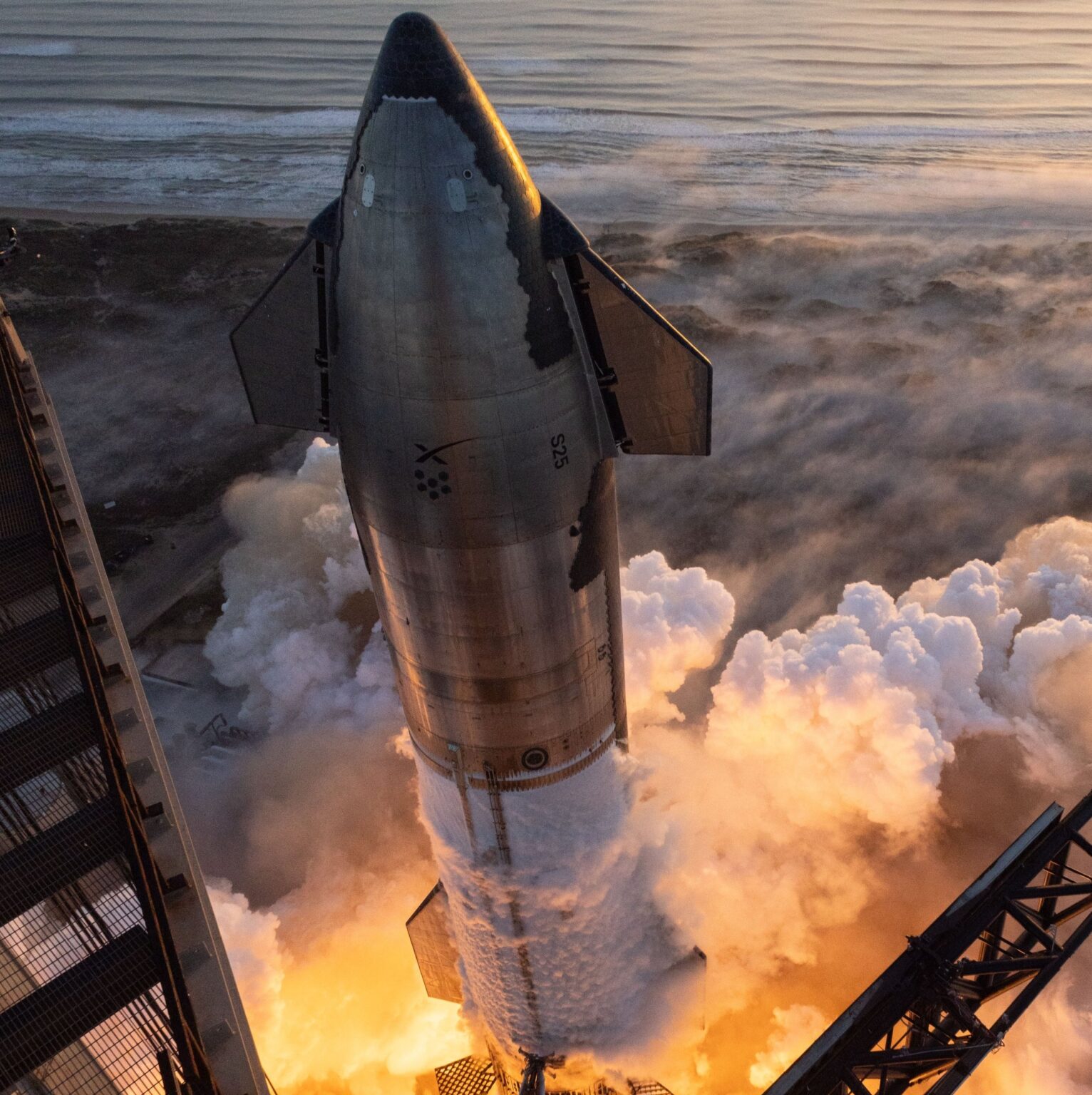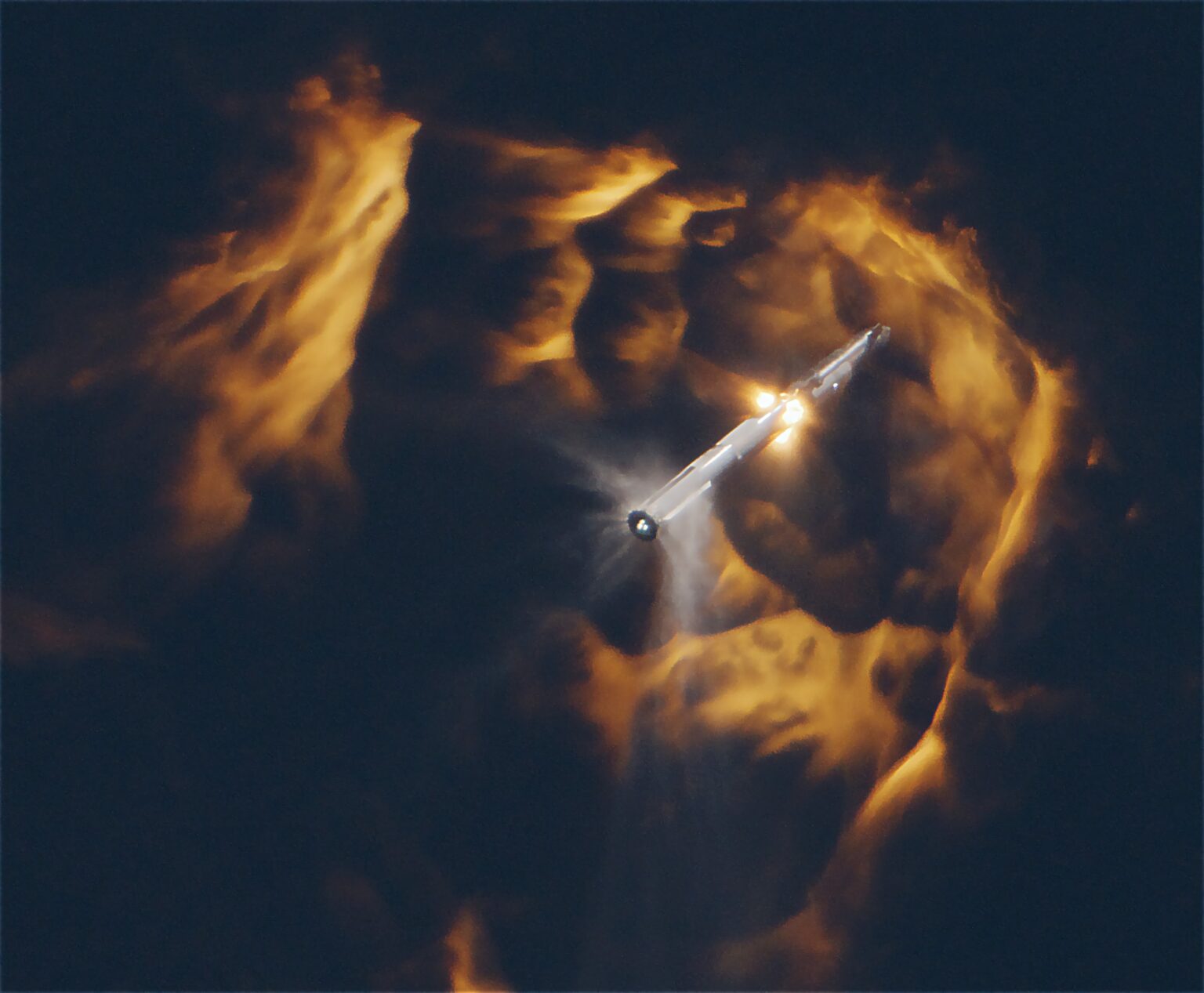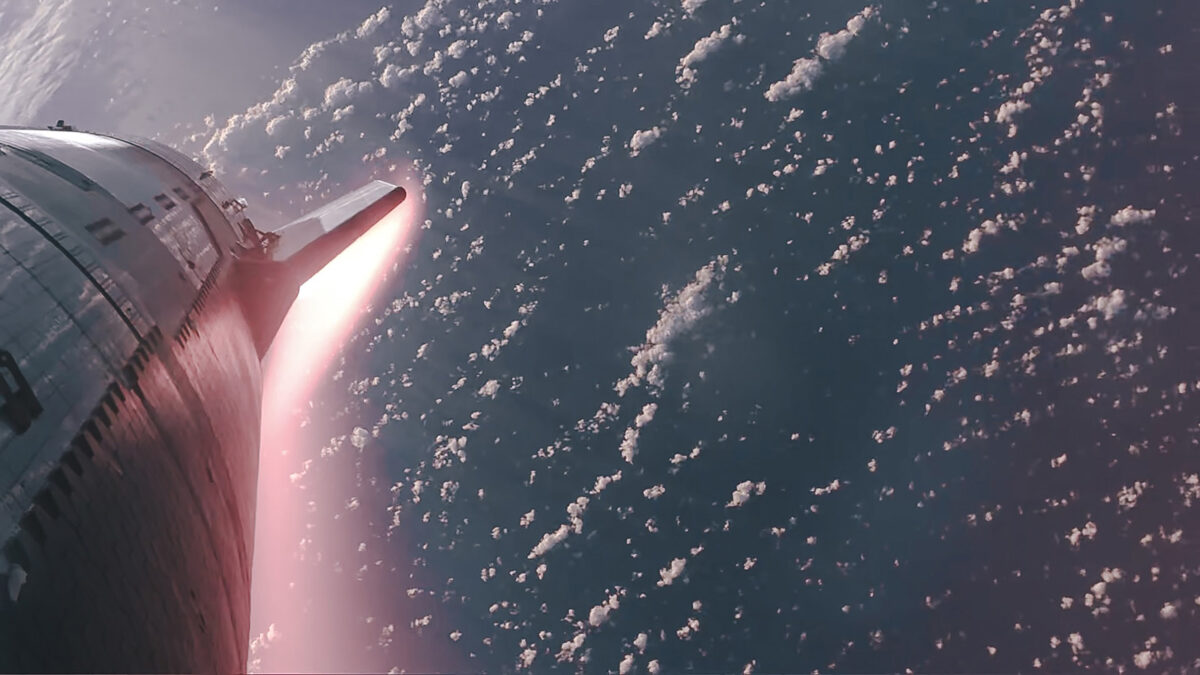This week, SpaceX may once again delight all space fans with a spectacular show in the form of a new flight of the Starship super-heavy rocket. If the company has no problems with the launch permit, it will take place on June 6. Here’s what to expect from the new Starship test and what tasks SpaceX is trying to solve this time.
The giant prototype
For obvious reasons, no article about Starship is complete without mentioning its characteristics. After all, it is the largest launch vehicle in history. The mass of the bundle of the spacecraft and the Super Heavy accelerator in the refueled state is about 5000 tons, and the height is 121 meters.

The height of the Super Heavy is 71 meters. The accelerator is equipped with 33 Raptor engines that use methane as fuel and liquid oxygen as an oxidizer. The Starship (50 meters long) is equipped with six Raptor engines. In the reusable version, it can deliver 100-150 tons of cargo to low Earth orbit.
But the most surprising thing is that all these figures apply only to the prototype, which is intended for orbital testing and technology development. Future modifications of the ship, which will actually launch cargo into space and send people to the Moon, will be even larger and more powerful. As recently as May, Elon Musk said that the so-called third version of Starship will be about 15 meters taller than the current prototype and will be able to launch about 200 tons of payload into orbit in a fully reusable configuration.
More frequent and reliable
There is one more important detail worth noting. For Starship to be successful, it is not enough that the ship just flies. It needs to do so regularly — preferably with the same frequency as the Falcon 9 is currently doing. After all, Artemis III mission, for instance, will require a double-digit number of orbital refueling of the ship — and they must be performed in a fairly short time.

What do the numbers say? It took 212 days between the first and second Starship flights. 117 days passed between the second and third launches. If the fourth flight does indeed take place on June 6, it will make 84 days since the previous test. The trend of reducing the time between launches is obvious, but of course, SpaceX is still quite far from the required performance. Flight success plays a key role here. After all, the more tasks that can be solved, the fewer changes engineers have to make to the ship’s design.
Plan for the fourth Starship flight
With all of the above in mind, let’s now talk about the new Starship flight itself. In general, its plan repeats the scheme of the previous test, but with some nuances.

So, Starship will be launched again from the Starbase spaceport, located near the Texas town of Brownsville. After the Super Heavy separates from the Starship, it will perform a reentry maneuver and try to gently descend into the waters of the Gulf of Mexico.
A similar task was assigned to Super Heavy during the previous test. Then the accelerator completed most of the required tasks. However, due to a clogged filter in the liquid oxygen supply system, the engines began to shut down too early, which led to a loss of contact when the stage was at an altitude of 462 meters. SpaceX engineers have taken a number of measures to prevent the incident from happening again in the future, including changing the design of the oxidizer tanks.
As for the Starship itself, it will be accelerated to a slightly lower speed than the first spacecraft. This ensures that in the event of a loss of control, the ship will not remain in orbit in any case, but will fall into the ocean.
During the previous flight, the engineers wanted to conduct three tests while the Starship was in space: open the payload hatch, test the internal fuel pumping system, and re-launch the Raptor engine. The first two tests were successful, but the engine restart had to be abandoned. The fact is that a few minutes after Starship separated from Super Heavy, it began to lose its ability to control its position. This was due to clogged valves. As a result, the ship entered the dense parts of the atmosphere, unable to maintain the given orientation, and got destroyed at an altitude of 65 km above the Indian Ocean.

The key task of the fourth Starship flight is to pass this stage. The flight plan envisages that the ship will enter the atmosphere over the Indian Ocean, make a controlled descent, gradually reduce its speed, and then perform a soft splashdown using engines (the latter was not foreseen during the previous test). So, if everything goes as planned, SpaceX will have fully practiced all the key stages of the Starship’s flight.
This is the plan — and we will know what will happen in reality soon. On the one hand, SpaceX specialists regularly demonstrate the ability to do what many consider impossible. On the other hand, we should not forget that Starship is still a prototype consisting of a huge number of components and complex systems, the failure of any of which can lead to a disaster. But no matter how the new flight of the giant rocket ends, there is no doubt that those who watch the live broadcast of its flight will not be bored.


